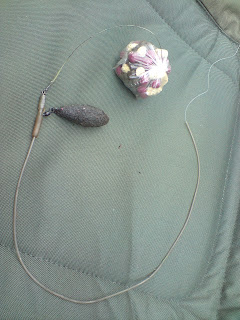I am writing this article with the anglers in mind that can not perhaps afford to spend lots of money on expensive bait, but still want to fish with bait that is better than average and will catch you more than you normally would. This might be particularly useful for the match anglers out there.
I started the session by riddling my maggots to remove the sawdust/maize that they are kept in then poured Chapel Baits strawberry glug over them then put the lid on and shook them to cover them all. This will enhance your maggots, giving you that edge over other anglers. Along side the maggots I also used strawberry flavour soft hookers. These seemed to pick off the bigger fish, catching most of the tench. To feed the hookers, squeeze them between your fingers, just to split them. By doing so they will sink, creating perfect feed alongside your hookbait. When hooked they sink slowly through the water, balancing the weight of the hook, therefore fooling more fish into taking the bait on the drop.
The most important thing to do when bagging up is to feed as often as possible. By using a medusa pole pot I could feed maggots and hooker pellets constantly over the top of my float. When shipping out or playing a fish, twist the pole and it will stop any bait being dispersed because of the clever shape design. Also, all the while I was fishing the margin swim on the pole, I had a maggot feeder set up to cast to an island when I had been baiting throughout the day. When your primary swim goes a bit quiet this can be a great back up to pick off ‘bonus fish’ whilst still feeding your first spot that has gone slow.
After catching a fair few skimmers I followed my usual pattern of switching to a hooker pellet. Immediately it picked out a better fish and the elastic shot into a bush! Keeping steady pressure on the fish, I managed to get it out of the snags then I had to connect all my pole sections on and hold on tight and grit my teeth in hope it would have to swim back towards me at some point. After about a 10 minute fight a pristine ghost carp was in the net. I continued to catch skimmers and the off tench, and 2 signal crayfish, which certainly did not go back in the water!
At the end of the session I had landed a very respectable 14lb’s and 14oz’s, so overall a good day.
Tight lines… Michael Wickens
To check out Chapel Baits follow the link to the site - http://www.chapelbaits.co.uk/

































